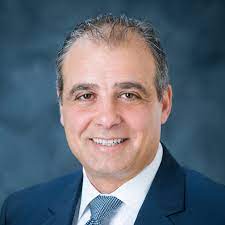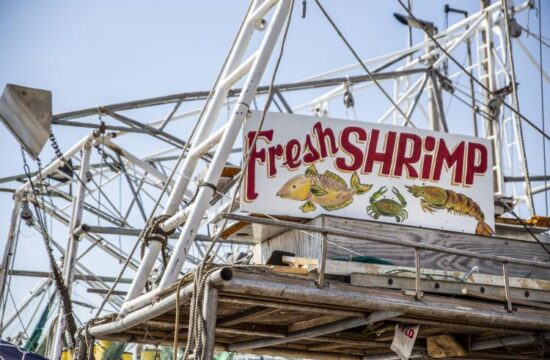Jess Dickinson was the new head of the agency. He announced the shortfall Tuesday in front of a Senate Appropriations Subcommittee. He explained that Child Protection Services, which was created by the state in 2016 as an independent agency, is not eligible for federal matching dollars. It was previously part of the Department of Human Services. The shortfall amounts to one-fifth the agency’s budget of $207 million. This shocked lawmakers, who many said that they had never seen such a mistake. Buck Clarke (R-Hollanddale), Senate Appropriations Chair, said that the shortfall “has just kind of blown our minds.” He was informed about it last week. “I’ve never witnessed something like this happen.” However, the problem has likely been in the making for at least two years. Dickinson took over after David Chandler, the agency’s former executive director, died. He said that he was aware of the discrepancy in just weeks after he joined the agency in September. Dickinson shared with lawmakers that he was shocked to learn that the department received nearly $130 million less than the estimated amount during a telephone call that Dickinson had with John Davis, director of Department of Human Services. This was a significant departure from the original estimate. Child Protection Services submitted its budget request for fiscal 2018 in September 2016. It projected that it would spend $317million and receive $198.6 millions in federal funds. Dickinson assumed control of the agency the following fall and determined that the actual budget was $207 million. This is approximately $110 million more than Child Protection Services originally projected. The agency would only receive $70 million in federal funding, which is nearly $130 million less than the original estimate. Dickinson said Tuesday that he had no idea from where the numbers came. “I don’t know how someone predicted or suggested this. I’ve asked everyone where these numbers came form and they all said that they don’t know. “They’re made up,” I can tell you. Although it’s not clear where the discrepancy came from, staff at the agency said that the funding problems likely occurred under the previous administration. Taylor Cheeseman, chief staff member for the commissioner, said that it was hard to believe that they didn’t know. Chandler did not respond immediately to a voicemail. Child Protection Services is eligible for a substantial state appropriation of nearly $100 million, but the agency relies heavily on federal matching funding. This is similar to the Division of Medicaid or Department of Human Services. Many Child Protection Services programs, unlike those of the Department of Human Services and Division of Medicaid, are not eligible for federal matching funds. When the agency was a department within the Department of Human Services, this was no problem. In 2015, however, the Legislature decided to create Child Protection Services. This made it a separate agency with its own budget line. This was a significant step forward for state child services, who have been struggling for over a decade with the Olivia Y suit, in which a federal judge found that the state failed to adequately protect the children it had custody. However, legislators may have forgotten an important detail about how the new agency would be funded in their rush to agree to the settlement. In Tuesday’s committee meeting, Sen. Terry Burton (R-Newton) stated that “we thought we could do this on our own, but we went out to do it wrong.” Clarke stated, “I’m just telling the truth.” Clarke explained that regardless of the reason for the problem, the agency was responsible for correcting the numbers and notifying legislators if they were wrong. Clarke stated, “These agencies, they depend on them and the experts to tell us how it goes in that federal line.” While both sides of the aisle believe that Child Protection Services has become its own agency, it is possible that the budget problems will force them to re-join the agencies. The shortfall at $52 million was more serious when Dickinson took control. Dickinson stated that the agency was already able to recover $13.9 million of its deficit through the transfer of certain positions to the human-services division. Dickinson stated that the agency has reached a memorandum with DHS, which leaves it $38 million in debt for the current fiscal year. I don’t know how to address this. There are no other options. This money is primarily salaries to caseworkers in field and their supervisors.” The budget gap in Child Protection Services is especially critical, as CPS is not allowed to reduce its workforce like other agencies. Olivia Y litigation dictates the maximum number of employees an agency can have. This means that the agency must employ at least 1,000 field workers and 200 supervisors. Dickinson stated Tuesday that the agency must still hire 200 more caseworkers and 60 additional supervisors to meet these requirements. Cheeseman stated that “So we need to continue adding staff if we want to comply with Olivia Y.” The result is that legislators are at a loss to find a solution to the budget gap. Clarke, the chair of appropriations, raised his hand and shrugged when Clarke was asked where the state could find the $40 million, which is just under 1% of the total state budget. He said, “I don’t know.” To support this important work, you can make a regular donation to the Spring Member Drive today. Our reporters give a human face to policy’s impact on everyday Mississippians by listening more closely and understanding their communities. To ensure that our work is aligned with the priorities and needs of Mississippians, we are listening to you. Click the button below to let us know what you think. Republish this Story You can freely republish our articles online or in print under a Creative Commons licence. This work is licensed under a Creative Commons Attribution-NoDerivatives 4.0 International License. Mississippi Today, Larrison Campbell
January 10, 2018, Larrison Campbell, a Greenville native, reports on politics with a focus on public health. Larrison Campbell is a Greenville native who reports on politics with an emphasis on public health. She was a Wesleyan University bachelor’s student and Columbia University’s Graduate School of Journalism master’s student.










